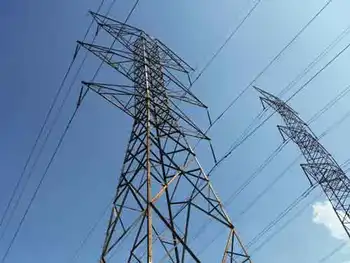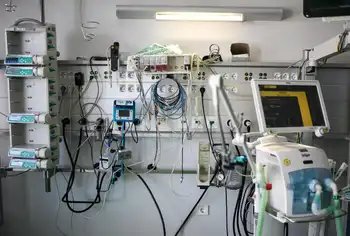AEP plans backyard energy storage
By CNET News
High Voltage Maintenance Training Online
Our customized live online or in‑person group training can be delivered to your staff at your location.

- Live Online
- 12 hours Instructor-led
- Group Training Available
Ali Nourai, AEP's manager of distributed energy resources, calls the storage program a potential "game changer" for the utility industry. Nourai spoke during a panel on grid energy storage at the MIT Energy Conference.
"The key for distributed energy is not because it's cheaper. The key is national security — we don't have a huge storage (device) that can be blown up," Nourai said.
The storage units would be the size of a relatively small "backyard transformer," each wired to provide enough electricity for four to six houses, he said. Together, those storage units could provide back-up power to neighborhoods during outages and potentially for other applications, Nourai said.
"Aggregated, hundreds of these units controlled (by AEP)... effectively do the same as one big storage unit," he said. "It's closer to the load, and it has the potential to (create) competition on price."
AEP is one of the few electric utilities in the U.S. that has already deployed storage on the electricity grid, which is very expensive. The utility, which operates in Midwestern and Southern states, started three years ago with a one megawatt sodium sulfur battery. It now has six megawatts worth of storage in three locations using this technology, Nourai said.
In these cases, AEP can do "peak shaving" in which it draws on the stored electricity during peak times, such as the middle of hot summer day when air conditioning loads are high. Because the stored energy supplies electricity to the grid, the utility doesn't need to pay for electricity at high peak-time rates.
Although this has proved to be a viable application, speakers on the energy storage panel said that the high cost of batteries and other storage technologies makes it difficult for utilities to justify investments in the technology.
Because of the high cost, energy storage devices need to be used for a number of applications to generate sufficient revenue, the speakers said. For example, a large battery could provide back-up power, do peak shaving, and be used to stabilize dips in grid signal frequency.
"At the end of the day, it's going to be cost that drives acceptance of storage on the grid," said Gary Colello, CEO of Premium Power, which makes a zinc bromide fuel cell that provides short-term storage to utilities in the U.S. and Canada.
Another problem is that current utility regulations are structured around utilities making investments in power generation. "Without a fairly radical rethink of utility regulations, to get the mass movement of energy storage beyond a handful of utilities — it's not going to happen," said Matthew Nordan, the president of consulting firm Lux Research.
AEP's Nourai said the regulators need to be educated on the different values that energy storage can provide. Some of those are economic, like providing back-up power, whereas others are societal benefits because they help the environment. For example, storage makes bringing renewable energy sources onto the grid more feasible.
The growing interest in renewable energy, in fact, is what prompted AEP to explore energy storage in the first place, said Nourai.
"Our business was being threatened by something that everybody loves — renewable power," he said, noting that the amount of solar power from its customers grew from kilowatts to megawatts over the past five years. "We love it, too, but we have no control over it. (Customers with solar) could turn off megawatts of power or not maintain it."
Wind and solar energy are also variable, meaning they can't deliver electricity as reliably as a fossil fuel power plant. Energy storage, through batteries or compressed air storage, is one way to deal with that variability.
To deal with the projected increase of renewable energy, utilities need a "buffer" in the form of storage so that it can control the flow of electricity onto the grid in a managed way, Nourai said.
Although the basic technology for energy storage hasn't changed in decades, interest has peaked substantially in the last few years. Nourai said that five years ago, only engineers went to energy storage conferences; now half of the attendees are venture capitalists and politicians. The energy storage session at the MIT Energy Conference was standing-room only.
For its distributed storage plans, AEP said that just four hours of back-up power could address 90 percent of the outages the utility has to deal with. "When (storage) is closer to the customer, it's more reliable," Nourai said.











